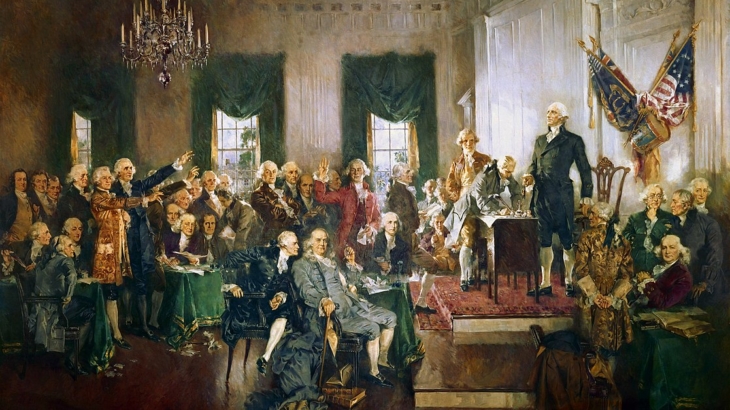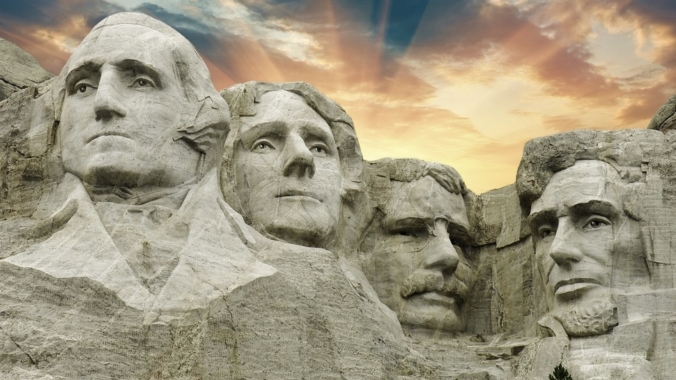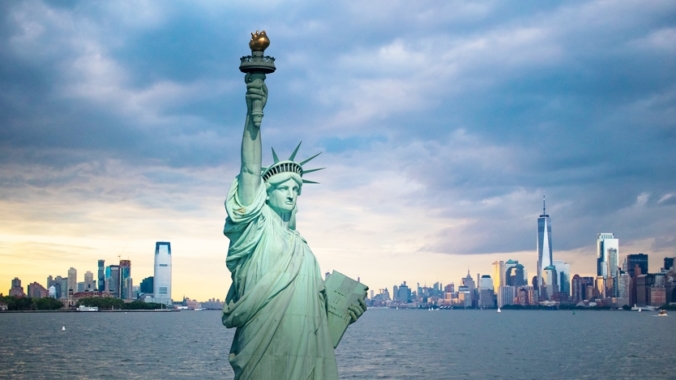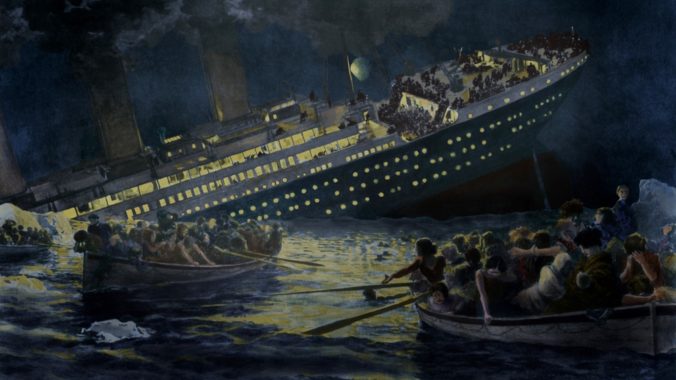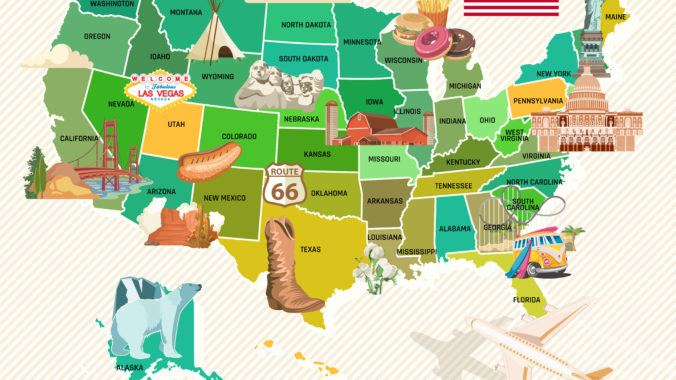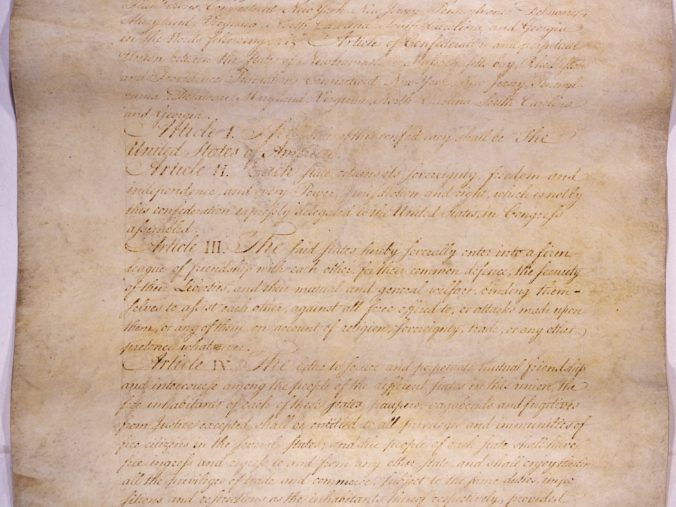
Essay Read By Constituting America Founder, Actress Janine Turner
“Whereas Almighty God hath created the mind free; that all attempts to influence it by temporal punishments or burthens, or by civil incapacitations, tend only to beget habits of hypocrisy and meanness, and are a departure from the plan of the Holy author of our religion, who being Lord both of body and mind, yet chose not to propagate it by coercions on either, as it was in his Almighty power to do;…that to compel a man to furnish contributions of money for the propagation of opinions which he disbelieves, is sinful and tyrannical;…and finally, that truth is great and will prevail if left to herself; that she is the proper and sufficient antagonist to error, and has nothing to fear from the conflict, unless by human interposition disarmed of her natural weapons, free argument and debate, errors ceasing to be dangerous when it is permitted freely to contradict them:…Be it enacted by the General Assembly, That no man shall be compelled to frequent or support any religious worship, place, or Ministry whatsoever, nor shall be enforced, restrained, molested, or burthened in his body or goods, nor shall otherwise suffer on account of his religious opinions or belief;” – Thomas Jefferson, Virginia Statute for Religious Freedom, January 16, 1786.
Freedom of religion has been a foundational belief ever since America’s colonial beginnings in the seventeenth century. Most of the colonies were religiously inspired enterprises, and the early laws and charters of the colonies reflected those religious beliefs.
The European settlement of America owed much to the desire of the new settlers to escape the religious oppression of their old country. They braved the long, treacherous ocean journey to come to an unknown land filled with unknown dangers, all for the sake of finding the freedom to practice their religion.
A belief in freedom of religion stems from the conviction that religion reflected a higher source of authority than do civil governments; therefore, those governments should not coerce individuals from following their religious beliefs, especially when those beliefs do not threaten the state or pose harm to any other individual.
England, an originating country for many early settlers, possessed a state established religion—the Church of England. The government both supported this religion, with tax revenues, and regulated its theological practices. This meant that individuals who did not adhere to the tenets of the Church of England and who did not wish to belong to that religion were nonetheless forced to support it. Moreover, religious dissidents were often oppressed and discriminated against in various ways. It was this oppressive environment from which many American settlers wished to escape.
Once in America, the settlers initially formed their colonies around the single religion of their belief. However, as settlement increased and the colonies became more diverse in their population, the colonies in turn became more diverse in their religious identities, with the result that the American colonies acquired a practice of religious tolerance unknown in Europe.
This tolerance continued after America achieved its independence and formed a constitutional republic. The very first freedom enshrined in the First Amendment of the Bill of Rights guarantees individuals the right to freely exercise their religious beliefs. To further protect religious freedom, the First Amendment also prohibits Congress from establishing a state-run religion, as England had done with the Church of England.
Over the years, courts have grappled with the application of these religious liberty provisions in the First Amendment. The courts have ruled that the Free Exercise Clause prohibits government from targeting religion for selective burdens or discriminating against religious believers. However, because courts have not wanted to adjudicate all the areas in which religious beliefs might conflict with secular laws, the courts have held that neutral and generally applicable laws that incidentally burden religion are not unconstitutional. This holding has left religious believers vulnerable on a number of fronts, and so Congress in 1993 by an overwhelming margin passed the Religious Freedom Restoration Act, which sought to strengthen legal protections for religious liberty. Unfortunately, during the thirty years since passage of that law, the commitment to religious liberty on behalf of many political and governmental leaders appears to have waned.
With respect to the Establishment Clause of the First Amendment, courts have been even more confused and divided. Whereas some judges believe that the Establishment Clause was intended as another means by which to protect religious liberty, other judges have seen the Clause as a tool by which to prohibit any interaction between government and religion, thereby preventing religious institutions from receiving any government benefits or recognitions that all other social institutions are entitled to receive. This latter position rests on the argument that any government benefit given to a religious organization, regardless of whether that benefit has anything to do with religious beliefs, amounts to an unconstitutional establishment of religion. Essentially, this argument equates a Christmas display of a nativity scene in a public park with the tax-supported Church of England.
The judicial dispute on the Establishment Clause has come down to a debate over whether the Clause was intended to protect religious liberty or the secular identity of society. Recently, the U.S. Supreme Court has greatly clarified the nature and purpose of the Establishment Clause. Several years ago, it held that a cross monument constructed by private parties to honor military veterans, but now standing on public property, did not rise to the level of an unconstitutional establishment of religion. And in 2022, the Court held that a public school district did not violate the Establishment Clause by not forcibly prohibiting an assistant football coach from voluntarily saying a private prayer at mid-field after the conclusion of a game.
Opinion polls and political agendas suggest that Americans may not value religious liberty in the same manner as eighteenth-century Americans did. But the constitutional Framers foresaw that religious liberty should not be left up to the dictates of political opinion. The Framers so valued religious liberty that they placed it as the first liberty protected by the Bill of Rights. And unlike contemporary critics who see religion as divisive, the Framers valued religion for contributing to the civic virtue and welfare of society.
For the constitutional Framers, freedom of religion was necessary not just to protect what was considered the most important individual liberty, but to protect the vitality and thriving of religious beliefs and institutions that in turn did much to strengthen society. Through religion, citizens learned the values of public service, honesty, and the rule of law. Religious belief combatted the vices of selfishness and greed and helped strengthen the virtues of self-sacrifice and self-restraint, which were seen as necessary traits for a stable nation.
 Patrick M. Garry is professor of law at the University of South Dakota. He is author of Limited Government and the Bill of Rights and The False Promise of Big Government: How Washington Helps the Rich and Hurts the Poor.
Patrick M. Garry is professor of law at the University of South Dakota. He is author of Limited Government and the Bill of Rights and The False Promise of Big Government: How Washington Helps the Rich and Hurts the Poor.
Click here for First Principles of the American Founding 90-Day Study Schedule.
Click here to receive our Daily 90-Day Study Essay emailed directly to your inbox.

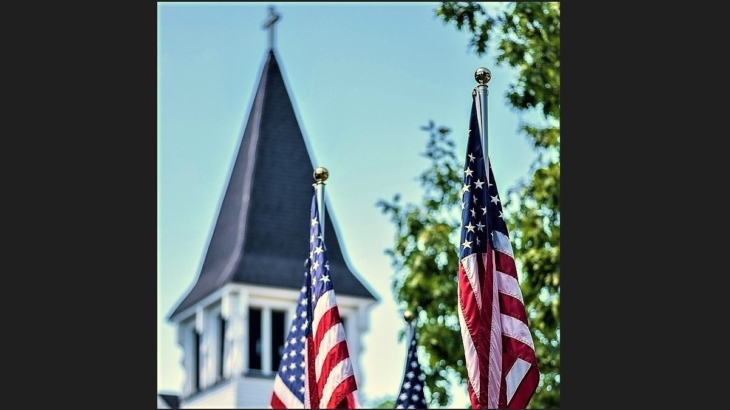



 Essay Read by Constituting America Founder, Actress Janine Turner
Essay Read by Constituting America Founder, Actress Janine Turner